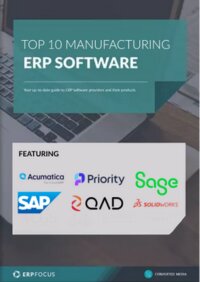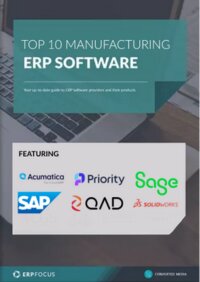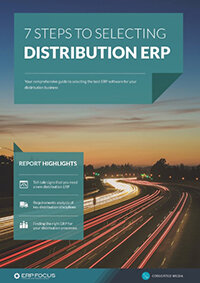How ERP can help prevent demand forecasting headaches
Forecasting demand is an ongoing challenge for supply chain managers everywhere. Customers often have a fuzzy idea of what they will want in the future (if they have any idea at all). Many businesses also have short product cycle times. There are many reasons why forecasting headaches can occur, from fluctuating demand to unreliable supplier timelines.
ERP is here to help
Every past order should be stored in your ERP. All the data, including customer name, SKU ordered, order date, requested delivery date, actual delivery date, and more are inside waiting for analysis. Have you ever run a query on your ERP order data sets and worked up a time series with them? There are plenty of mathematical models for demand forecasting to choose from and chances are your supply chain and order data will fit one of them with a reasonable degree of accuracy.
Recommended reading: Manufacturing ERP failure - 6 common causes
You can use models that come bundled with manufacturing ERP or expand the functionality of your system with bolt-on accessories. ERP demand forecasting tools for inventory optimization are readily available. Demand forecasting models are also available from third-party sellers, and although these might be the most sophisticated options available to you, they can often be the most costly.
A wealth of demand data sources
Another ERP tool that can help with demand forecasting is your CRM module. Ask your customers directly which products and volume they expect to order. With a good relationship, they are often willing to share their own forecasting data (be sure to inform them that no contractual agreement exists to purchase at the level their forecast indicates). Set your CRM to poll customers at frequent intervals and track their replies. Check the replies as a statistical time series of data just like your actual shipments.
Your marketing plan can also contribute to your forecasts. They will know if a special promotion is planned and should feed this data into your sales ERP module. Marketing will also be conscious of external factors that can affect a demand forecast. When a judgment call is needed, your marketing team should be able to contribute. Best practices for demand planning and ERP integration involve incorporating marketing insights alongside your supply chain and CRM data for a holistic approach.
Improve forecast accuracy with ERP
Your ERP can create a carefully developed forecast with component demands that can be used to inform your supply chain.
Look at your SKU forecast and place items into product families. Use this technique with the above suggestions, and you might find that, although a forecast for a specific item is difficult, a family forecast is attainable and valuable. A family should have many similar components that come from your supply chain. Identify the remaining components, and you might find that some of these are low cost, meaning you can store a large quantity at little cost.
Collaborate across your supply chain for accurate forecasts
Your ERP can create a carefully developed forecast with component demands that can be used to inform your supply chain. Share your forecast with suppliers to help them better serve your needs. Effective forecasting relies on trust across functions and organizations, involving customers, suppliers, distributors, and transportation providers. When all the players work together, the results can be wonderful.
Free white paper

Top 10 Manufacturing ERP Software Comparison
Compare the best manufacturing ERP systems

Featured white papers
-

7 steps to selecting distribution ERP
Get expert advice on distribution ERP selection and requirements analysis
Download
Related articles
-

Sales demand forecasting and ERP
How ERP improves your demand forecasting
-

Secret KPI: Why Your ERP Implementation Team Matters More Than Software
Learn how Godlan ensures successful ERP implementation for manufacturers with proven strategies &...
-

How to Track Your Supply Chain with ERP
Find out how you can use supply chain ERP to effectively monitor the upstream and downstream supp...

